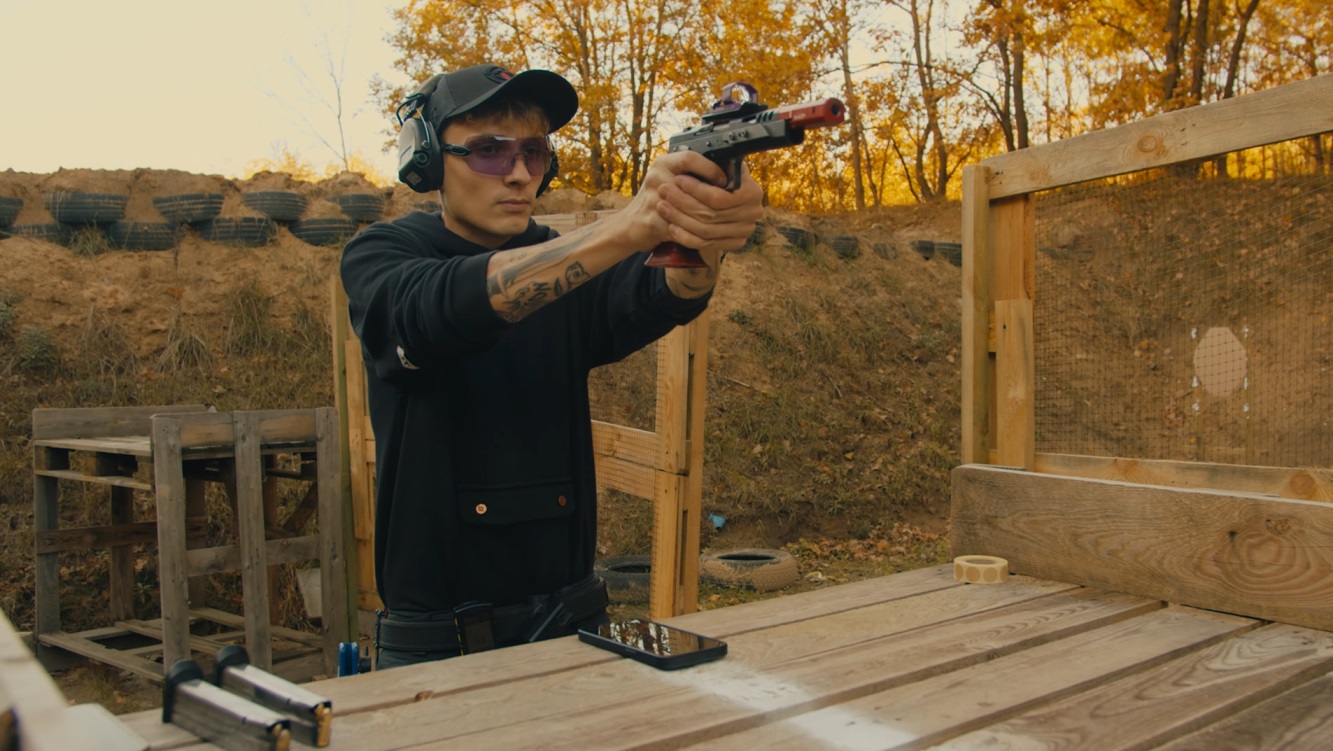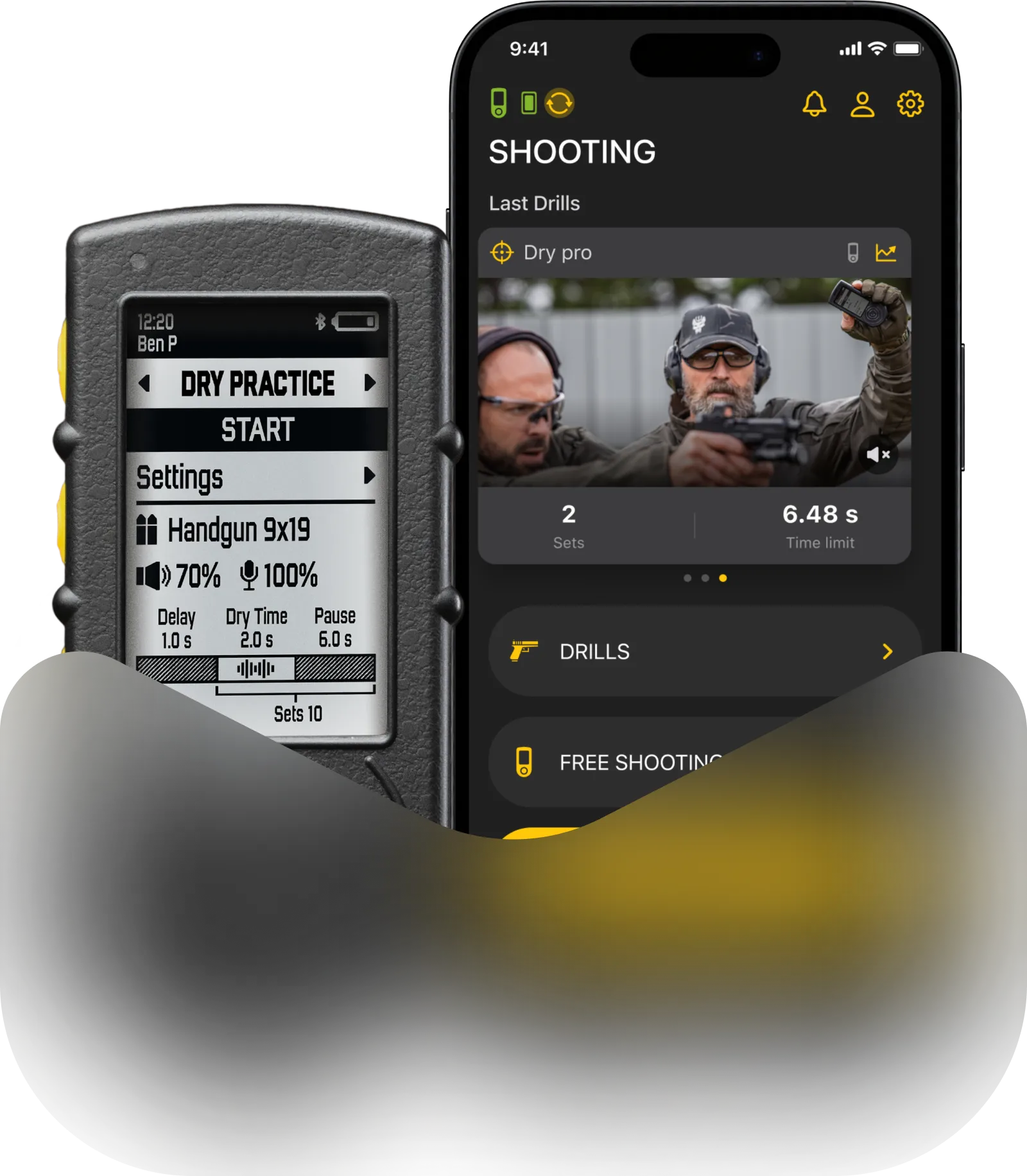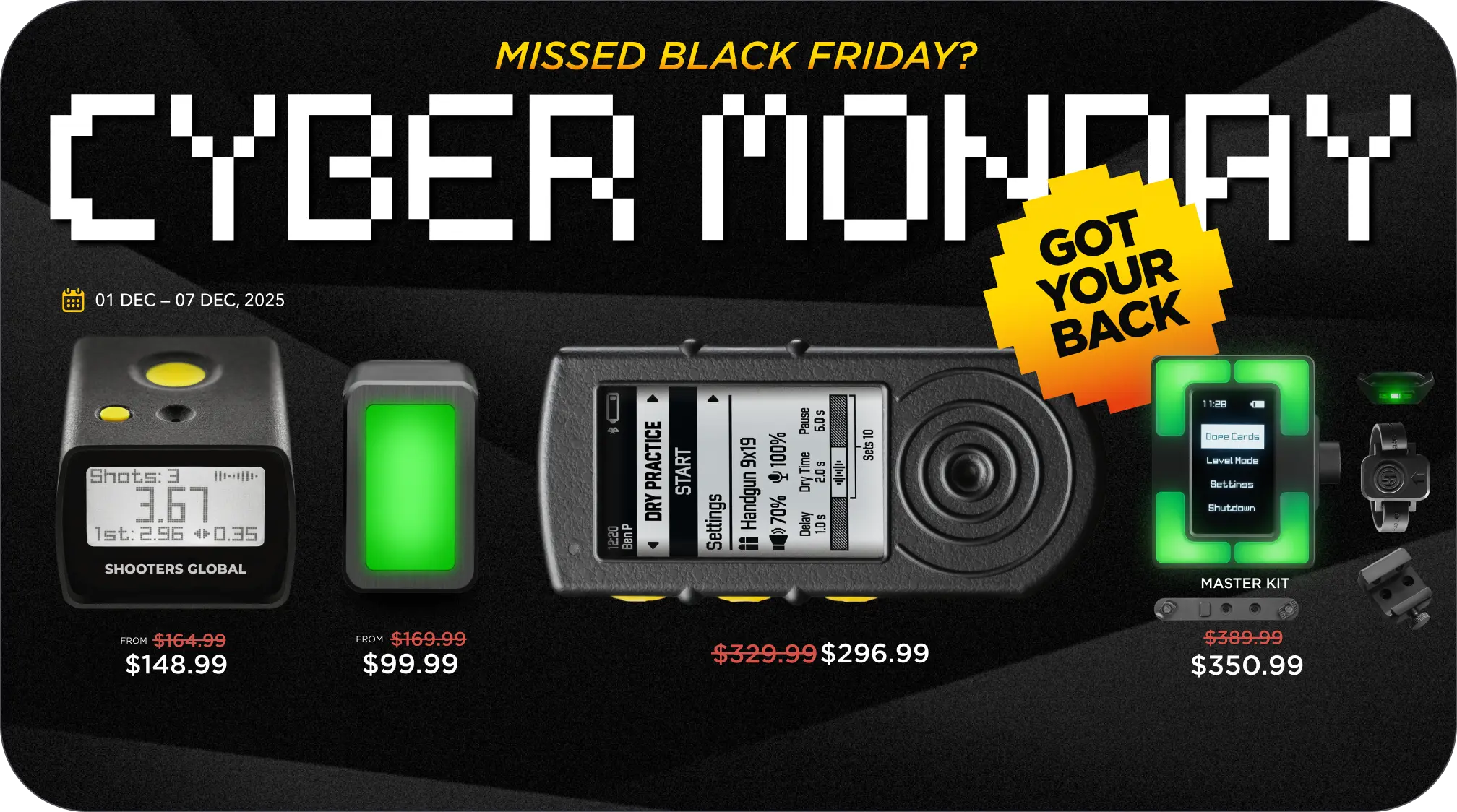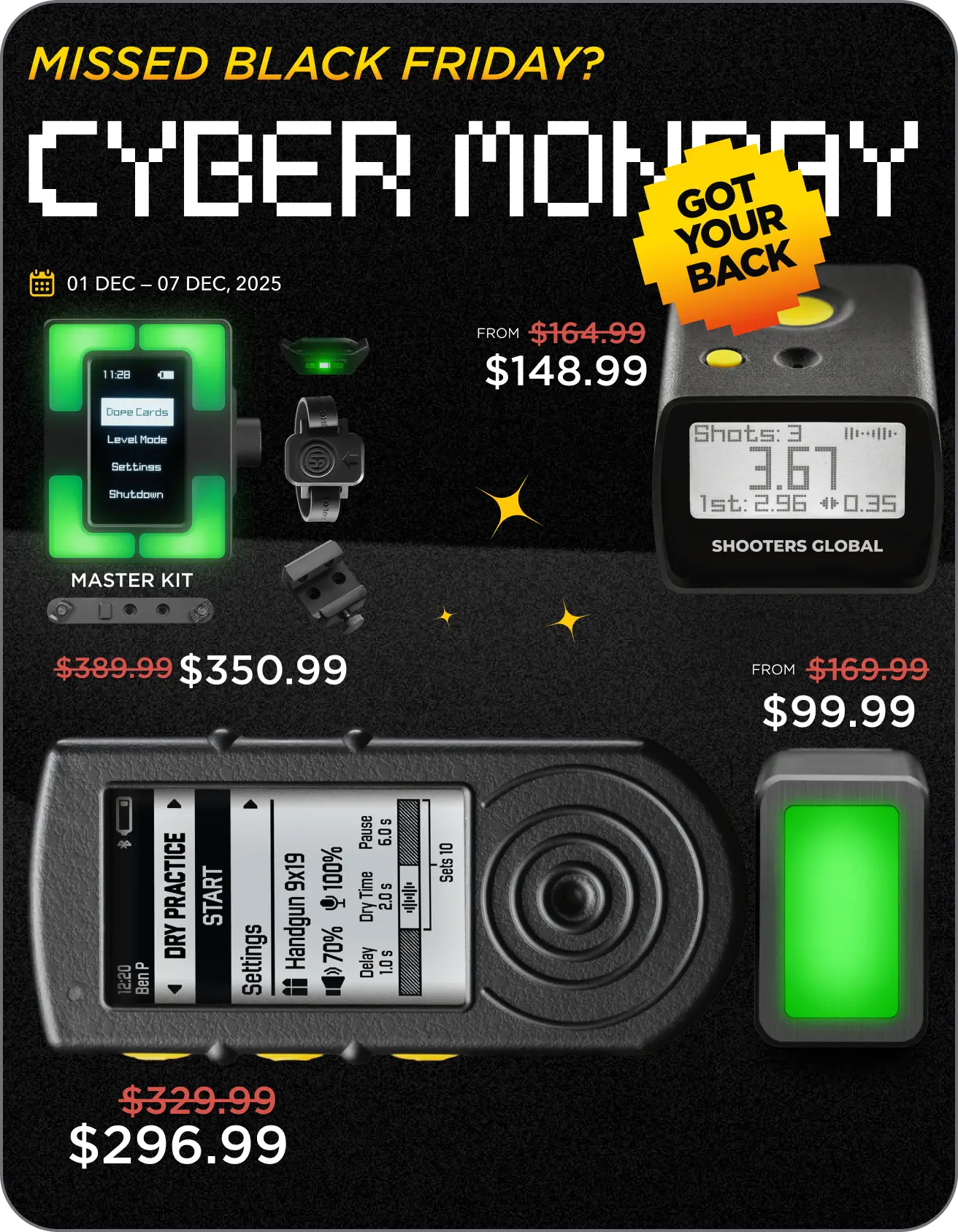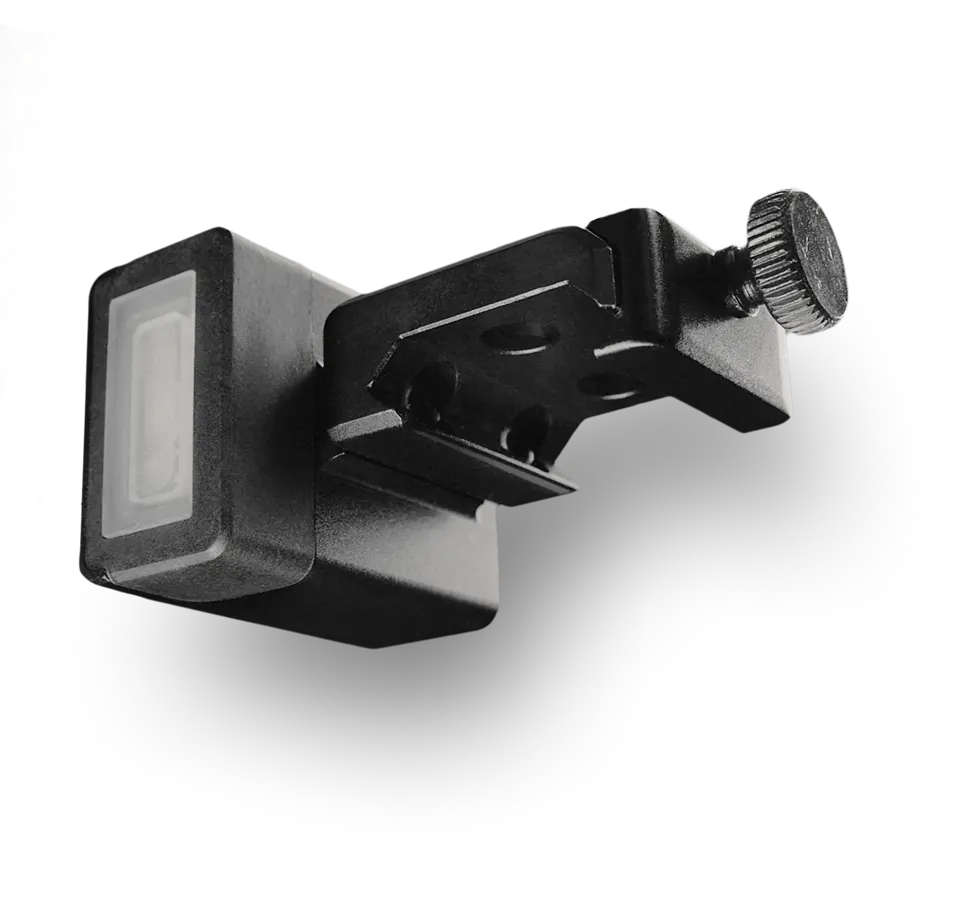You can practice shooting even without actually shooting. Dry shooting helps hone the speed of your movements, which is no less important than the accuracy of the shots themselves. In addition, dry shooting helps you save ammo and practice anywhere.
Today, we will tell you how to use SG Timer for dry fire practice.
Skills to Train Using Dry Fire
- Trigger control
- Aiming and sight alignment
- Drawing and presentation
- Reloads
- Malfunction clearance
- Shot placement
- Stance and grip
- Breathing control
- Follow-through
- Mindset and mental preparation
All these skills can be trained without live ammunition, just with a shooting timer.
Recommended: Shot Timers – An Essential Training Tool
Before the special timers, shooters simply fired against the clock. But in this case, you couldn’t get an accurate result. Now SG Timer catches the hammer drop sound, and you can see the exact execution time.
How to dry fire with SG Timer: Detailed Guide
This guide is available in two formats.
1) Watch video:
*The shooter is using SG Timer with U-Grip.
2: Read instructions:

Today, we’re going to do some dry fire training with the SG timer and the Drills app and go over the interface and settings you need for optimal training.
First, make sure to set your shot timer for Dry Fire mode. You can also cycle through the modes by pressing the upper button or the function button. There are two modes that you can dry fire in: classic, where the timer will just give you a start and end signal, and smart, where the timer will actually capture the sound of a trigger pull.
Classic Mode

You will need just these dry fire timer settings below. They control your PAR time and essentially program the shooting timer as to when it will be giving you signals. Delay can be instant, random, or custom. Sets is the number of repetitions, dry time is the duration of the repetition, and pause time is the pause between repetitions. So if you set up 9 seconds dry time, 8 seconds pause, and 5 sets, the timer will give you a start signal, wait for 0.9 seconds, give you an end signal, and wait for 8 seconds before giving you another start signal. This sequence will repeat five times. Gun type here doesn’t affect anything; this shooting range timer setting just allows you to identify your sessions easier in the history or inactivity in the Drills app.

All these settings can also be configured through Drills, a free mobile app we developed for the SG timer. Drills allow you to create an unlimited number of dry fire exercises using these settings and custom names. Using that, you can monitor your progress and see, for example, what your draw was a month ago. It greatly expands the timer’s functionality, but for now, we’ll stick to dry fire. You can watch a comprehensive app walkthrough by the link in the description.
Let’s use “Draw and first shot”.
We have 9 seconds to do the rep, a random delay, and the pause between reps is 8 seconds, and we will do it five times. As we push start, the timer will just start giving signals without capturing the trigger sound.

Smart Mode
The shot timer will capture the sound of the trigger pull. Here, the sensor settings start to play a big role. There are a lot of gear sounds which are impossible to distinguish from the trigger pull, so this is where we need the waiting time setting. All the sounds during dry fire are very close in time to each other.

Let’s say you draw, load, and make a shot.
All these sounds will be within about 5 seconds from each other. If we set the waiting time to 2 seconds, the shot timer will wait for 2 seconds before registering a trigger pull. For example, if you pull a gun at 5 seconds after the beat, the timer hears the sound but doesn’t register it. Instead, it starts counting 2 seconds. Then, at 1 second, you rack the slide. It’s 5 seconds after the first sound, so less than 2 seconds again it hears, but it doesn’t register. It starts counting 2 seconds again. At 1.5 seconds, you pull the trigger and freeze. The shoot timer hears it, waits for 2 seconds, and since there were no more sounds during this period, it registers the trigger pull and gives you an end signal.

It’s very important to not make any loud sounds after you pulled the trigger until you hear the timer end signal. Otherwise, the waiting time will reset, and the final time will be wrong. If you feel like the timer is showing wrong time, try looking at the screen to understand what sound it captures and try to eliminate it.
In smart dry fire, it’s better to have the timer facing forward or on the table under the gun. If you have a very light trigger, let’s draw, reload, and pull the trigger in smart mode. So over here, we have 2.2 seconds to complete, a random delay, and 8 seconds pause between five reps to give us some time to reset. The results are available in the shot timer’s history or inactivity in the Drills app. This is the actual execution time, and this is the Delta between execution and target time.

The goal was 2.2 seconds, and the best time is 2.11 seconds, 90 milliseconds faster than the goal. And the worst time is 2.59 seconds, almost a half second slower than the goal. And the timer shows you all of that on a single screen, doing all the math for you. And if you pair it with a video recording, you can compare your fast runs to your slow runs to point out mistakes and eliminate them. In the activity, we can see our latest session but now including the video. The color will indicate if you met the goal or not.
This way, you can save your results and track your progress with a dry fire timer. Try it yourself to understand the mechanics of the timer from personal experience.
SG Timer is your reliable training partner. Learn more about shot timers here.
FAQ
Does dry fire harm the gun?
Contrary to popular stereotype, dry fire does not cause any damage if the firearm. It may only be harmful for older models.
Does a shot timer detect dry fire?
Yes, it does. All you need to do is to select “Dry Practice” mode.
Is it safe to dry fire at home?
As one user on Reddit said, “Only if you stare at yourself in the mirror and say ‘you talkin’ to me!?’”. Jokes aside, it’s actually safe, as long as you double-check the gun a few times to make sure it’s not loaded.

